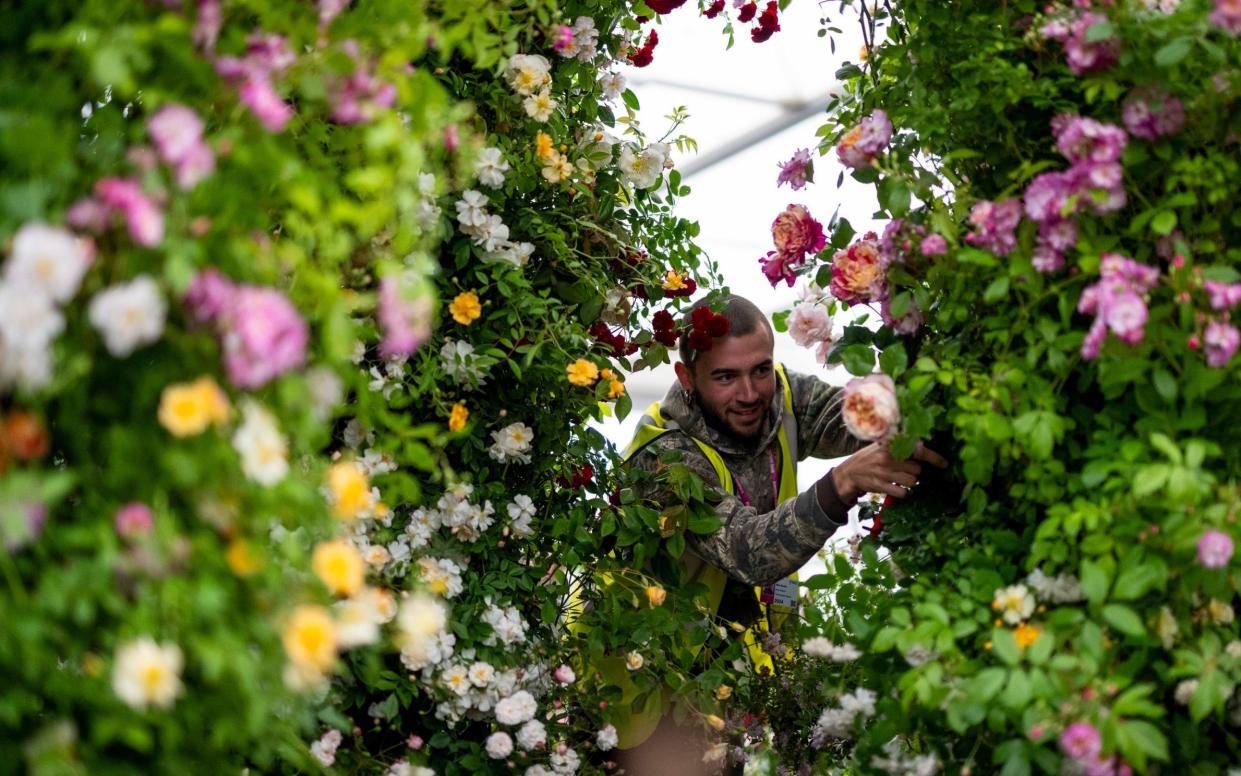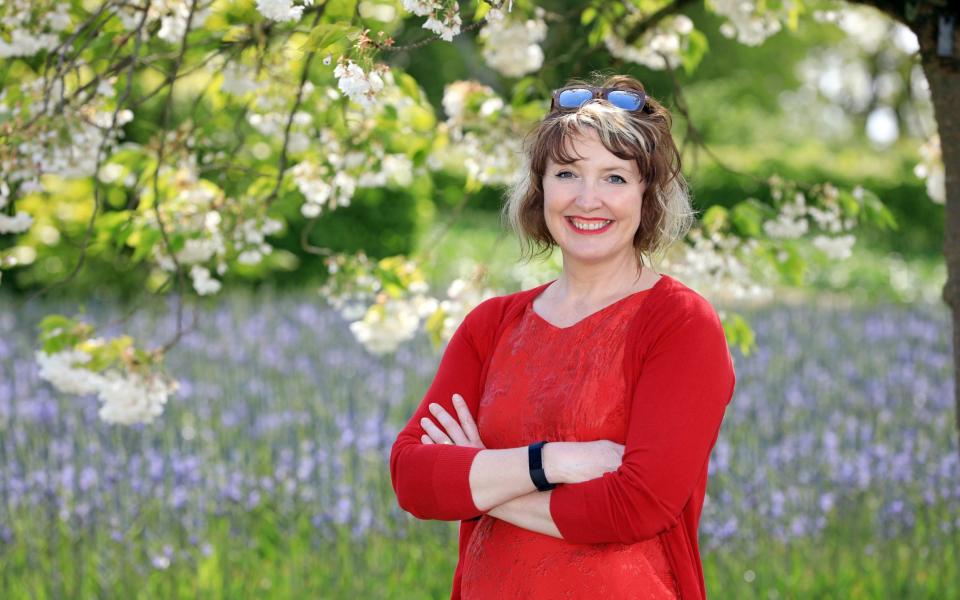Mild winter forces Chelsea Flower Show designers to swap out May blooms

Designers at the Chelsea Flower Show have been forced to swap out some of their traditional May blooms for later flowering plants owing to the lack of frost.
The UK had some of the warmest temperatures on record at the beginning of the year, causing some flowers to come out early, and complicating plans for the flower show, which starts on Monday.
Matthew Childs, who designed the Bridge to 2030 Garden for the Terrence Higgins Trust, said he had been forced to rethink his colour palette.

“With our more blousy plants, like the iris germanicas we’ve got in the garden, we planned on some red varieties that we’ve swapped out for some purples and some pinks,” he said.
“With iris germanicas as a species, some of them come on quicker, or flower earlier than others. It’s all about trying to keep the flower for the show.”
Ann-Marie Powell, who designed the Octavia Hill garden by Blue Diamond with the National Trust, replaced the native hawthorn, which traditionally flowers in May, for a non-native variety.
The designer said the unusual weather this year reflected broader instability in the climate, and showed the need to adapt planting techniques.
“The fact we can’t reliably use our native hawthorn at Chelsea any more shows there’s a pattern and we all need to adapt the way we garden, with more unpredictable and extreme conditions in mind,” she said.

Sophie Parmenter, who designed the National Autistic Society Garden, said she had to leave out some blue Himalayan poppies that were originally planned because they had “flowered their socks off about a month ago”.
But she was pleasantly surprised that the epimedium in the garden was unexpectedly flowering in time for the show thanks to the milder weather.
“I thought the flowers would be well and truly over, but they’re still doing something, which is nice,” she said.
Designers at Chelsea can always anticipate some changes to their anticipated line-up in the weeks leading up to the show, but this year’s changeable weather may have caused more switches than usual.
Robert Myers, who designed a show garden for St James’s Piccadilly and Project Giving Back said it had been “swings and roundabouts”.

“It’s been quite an early spring, so quite a lot of things have come out and been over that we haven’t been able to use, but conversely a lot of other things have come into play that wouldn’t have otherwise been good,” he said.
“The hawthorn which we hadn’t really expected to flower is looking absolutely brilliant, and then the calycanthus at the back has been a bit slow.”
Baz Grainger, who has designed a sanctuary garden for Killik and Co, said the weather had muted his palette in places.
“We had quite a lot of woodland plants, so things like anemone and woodland sorrel … actually didn’t make it,” he said.
“A lot of the things we really wanted to bring, particularly white and the pale yellows, we’ve ended up not having as much as we wanted.”
At the site this week, gardeners were keeping their fingers crossed that dramatic weather stays away while they put their final touches to the site before it opens on Monday.
“Hopefully it will stay not too hot, not too dry, and not too wet. Definitely no thunderstorms,” said Helen Olney, who designed a sanctuary garden for the Burma Skincare Initiative. “This is great for the plants.”

